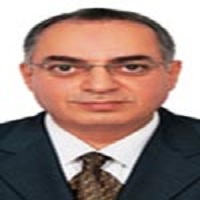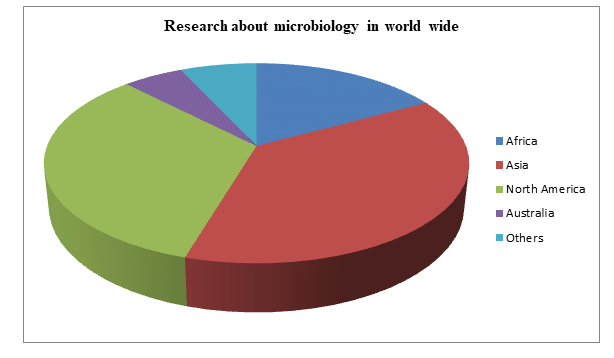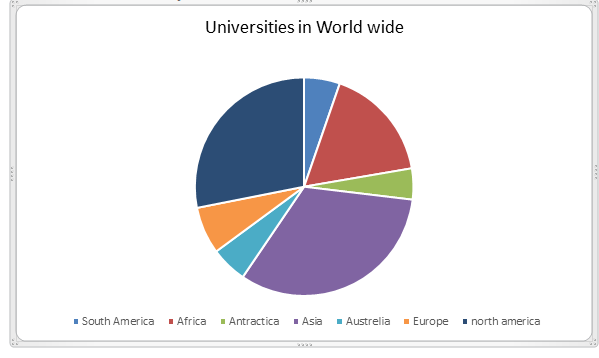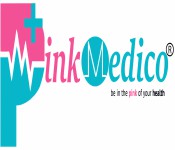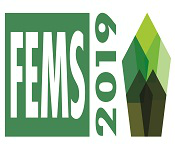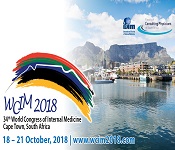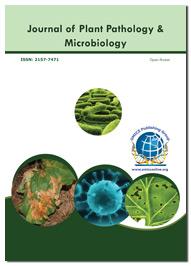
Antimicrobial Congress 2018 will be held on November 19-20,2018 at Bucharest, Romania.
ANTIMICROBIAL CONGRESS 2018

Keynote of Antimicrobial Congress 2018
Antimicrobial Congress 2018

Plenary sessions of Antimicrobial Congress 2018
Antimicrobial Congress 2018

Speakers of Antimicrobial Congress 2018
Antimicrobial Congress 2018

Keynote at Antimicrobial Congress 2018
Theme: Amelioration in Research to Retried Antimicrobial Agents
Antimicrobial Congress 2018
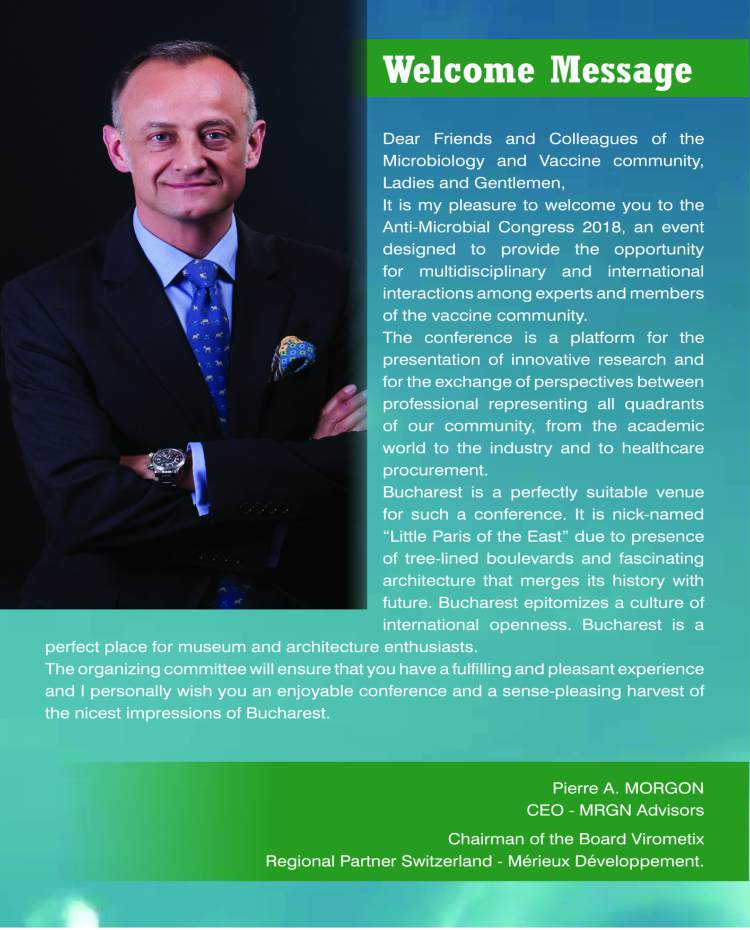
“The good physicians treat the disease; The great physicians treat the patient who has the disease.”- William Osler
ME Conferences invites all the participants from all over the world to attend ‘ANTIMICROBIAL CONGRESS 2018’ which includes prompt Keynote Presentations, Special Sessions, Workshops, Symposiums, Oral talks, Poster Presentations and Exhibitions.
An antimicrobial is an operator who is kill microorganisms or repress their development. They are classified to their mode of activity on particular microorganism. Depending on the range of bacterial species helpless to these specialists antibacterial are classified as wide range, intermediate-spectrum, or narrow- range. Non–pharmaceuticals antimicrobial gives a wide range of chemical and common compounds utilized as antimicrobials. The Immunology of have defense peptides gives assorted activities of HDPs. The utilize and misuse of antimicrobial drugs quickens the rise of drug-resistant strains. Post-antibiotic period alludes to a time when a number of irresistible illnesses will be inert to anti-microbial medicines.
Multidrug resistant (MDR) are those organisms that resistant to different antimicrobials .Resistant microorganisms (compiling organisms, bacteria, parasites and infections) have the capacity to allow impacts on antimicrobial drugs. Unreasonable utilize of antimicrobial drugs rapidify the origin of drug-resistant strains. Poor contamination control practices, unseemly food-handling and insufficient sterile conditions leads to spread of antimicrobial resistance. Determination of antimicrobial medicate resistance is assessed by lab tests that makes it troublesome for the the confined organisms to develop and survive in the nearness of the sedate. Antimicrobial chemotherapy alludes to the utilize of antimicrobial drugs to treat contamination. Microbial immunology alludes to the interrelationship among irresistible specialists and their has, with microbial and viral pathogenesis and the immunological have reaction to diseases.
ME Conferences is organizing “International Conference on Antimicrobial and Antibacterial Agents” during November 19-20 at Bucharest, Romania. Conference highlights the theme Amelioration in Research to Retried Antimicrobial Agents.
Antimicrobial Congress 2018 is a leading platform for a focused agenda of the current research in the field of microbiology which includes, guest lectures, keynotes, symposiums, workshops, exhibitions, panel discussions and poster sessions. We invite Microbiologists, Pathologists, Surgeons, Researchers, Students, and Business delegates to join us at Bucharest in November, 2018 for the 2-day power packed Microbiologists Meet.
Track 1: Antimicrobial Pathogens: Alternative Approaches:
The first bacterial genome sequencing was done on 1995 which was take a new era in the field of antimicrobial drug discovers, and it is now the great tools to search whole genome for new antibacterial targets. Biofilms are medically important to accounting for over 80% of microbial infections in the body. Drug resistance bacteria lead to poor clinical outcomes increasing health care and mortality.
The resources of these peptides in clinical application incorporate their potential for broad-spectrum movement, fast bactericidal movement and low affinity for resistance improvement, though conceivable drawbacks incorporate their tall fetched, restricted solidness (particularly when composed of L-amino acids), and obscure toxicology and pharmacokinetics. Beginning boundaries to their victory are being progressively overcome with the advancement of steady, more cost-effective and strong broad-spectrum engineered peptides.
Track 2: Antibiotic Therapy and Antimicrobial Drugs:
Antibacterial therapy contain an accurate diagnosis of infection, understanding the difference between empiric & definitive therapy, cost effective oral agents for the shortest duration, accounting for the host charterstics that influence antimicrobial activity, recognizing the adverse effects of antimicrobial agents on the host body. An antiseptic is used in living tissues and cells to destroy the infections which may be living on the tissues. Disinfectant is mean to destroy micro-organisms which can be infect nonliving objects. Anti-microbial / Antimicrobial resistance is the capacity of organisms to resist the impacts of drugs – that is, the germs are not slaughtered, and their development is not halted. In spite of the fact that a few individuals are at more prominent chance than others, no one can totally avoid the hazard of antibiotic-resistant diseases. Infections with safe living beings are troublesome to treat, requiring exorbitant and now and then poisonous alternatives. Bacteria will unavoidably discover ways of standing up to the anti-microbials created by people, which is why forceful activity is required presently to keep unused resistance from creating and to avoid the resistance that as of now exists from spreading.
Track 3: Antimicrobial Agents and Chemotherapy:
Antimicrobial chemotherapy is a clinical approach of antimicrobial agents to treat infectious disease. There are chemotherapy treatments for bacterial infection, fungal infection, protozoan infections, warm infectious and viral infections. Antimicrobial agents that treat microorganism infections area unit given as medication therapy, equally for plant life, microorganism and protozoan infections area unit they're given as antifungal, antiviral and medication therapy.
Chemotherapy is the use of any drug to treat any disease. But to most people, the word chemotherapy means drugs used for cancer treatment. It’s often shortened to “chemo.” Surgery and radiation therapy remove, kill, or damage cancer cells in a certain area, but chemo can work throughout the whole body. This means chemo can kill cancer cells that have spread (metastasized) to parts of the body far away from the original (primary) tumor.
Track 4: Antibacterial Agents in Clinical Treatment:
It is an analysis of the antibacterial clinical development pipeline, including mycobacterium tuberculosis. Resistance is a natural phenomenon which will develop by time. As misuse and overuse of antibiotics at accelerate the development of resistance. Antibiotics should be used for antibacterial treatment. The lack of new quality lead chemicals to test against gram-ve bacteria is another major impediment to discovery.
Clinical Pathology is accomplished through practical diagnosis of disease based on the laboratory analysis. Clinical Pathology is also useful in diagnosis of recent out broken diseases like Zika fever which is caused by zika virus. Zika virus is transmitted to people primarily through the bite of an infected Aedes species mosquito. Clinical Pathology so far covers the diagnostic testing, Implications of cancer patients, Prognostic value, clinical and non-clinical toxicology testing, Clinical finding of cancer and other disease. It emerges other subtopic like Neuropathology. The following topics are the latest research going on in clinical Pathology. There are 36 associations and societies all over the world and 90 universities are working for clinical pathology. Companies/Laboratories like Clinical Pathology Laboratories and other diagnostics laboratories are leading in research of this clinical pathology and 3400 hospitals around USA are associated with pathology.
Track 5: Pharmalogical Consideration of Infectious Diseases and Agents:
The pharmacology of antimicrobial agents are the drugs which is used in the treatment of bacterial infections. Β-lactams are a well established group of antibiotics that include penicillin, cephalosporin’s, carbapenems and monobactams.
The Pharmaceutical Microbiology Manual (PMM) advanced from the Sterility Analytical Manual and is a supplement to the Joined together States Pharmacopeia (USP) for pharmaceutical microbiology testing, counting antimicrobial viability testing, microbial examination of non-sterile items, sterility testing, bacterial endotoxin testing, particulate matter, device bioburden and natural checking testing. The objective of this manual is to supply an ORA/CDER harmonized system on the information, strategies and apparatuses required, and to apply the suitable logical measures required to evaluate the security and adequacy of medical items inside FDA testing research facilities.
Track6: Antimicrobial Agents and Novel Vaccines:
Vaccines can reduce the prevalence of resistance by reducing the need for antimicrobial use and can reduce its impact by reducing the total number of cases. By reducing the number of pathogens that may be responsible for a particular clinical syndrome, vaccines can permit the use of narrower-spectrum antibiotics for empirical therapy. These effects may be amplified by herd immunity, extending protection to unvaccinated persons in the population. Because much selection for resistance is due to selection on bystander members of the normal flora, vaccination can reduce pressure for resistance even in pathogens not included in the vaccine. Some vaccines have had disproportionate effects on drug-resistant lineages within the target species, a benefit that could be more deliberately exploited in vaccine design.
Track7: Global Antibacterial Drugs Market Key:
Based on drug class, the global antibacterial drugs market is classified into B – lactams, quinolones, macrolides, tetracycline, aminoglycoside, sulfonamide, phenicol’s, and others. In terms of routes of administration, the global antibacterial drugs market has been segmented into enteral, parenteral and others. Likewise, the global antibacterial drugs market has been further segmented into hospital pharmacies, drug stores and retail pharmacies and online sales, in terms of distribution channel. Analyst predicts that the global antibacterial drugs market to gain significantly from the increasing incidence of infectious diseases.
Track8: Antimicrobial Textiles Market:
The global antimicrobial textiles market based on agent, application, finishing technique, and region. To forecast the market size, in terms of value and volume, of five main regional markets, namely, Asia-Pacific, Europe, North America, South America, and Middle East & Africa. It is also provide detailed information on the key factors influencing the market growth, such as drivers, restraints, opportunities, and industry-specific challenges. We can strategically analyse micro-markets with respect to individual growth trends, prospects, and contribution to the total market.
Track9: Neuroinfectious Diseases :
Infection as a cause of neurologic disease is a prominent feature. Nonepidemic viral infections constitute the majority of infections affecting the nervous system today. Chronic neurologic disease as a sequel to infection is a relatively new and developing area of both pediatric and adult neurology research. Chief among these disorders is the role of post infectious brain inflammation in epileptogenic.
Track10: Molecular Epidemiology of Neoplastic and Non-neoplastic disease:
Sever infections represent the main cause of neonatal mortality accounting for more than one million neonatal death. Antibiotics are the common medication in neonatal intensive care unit. While there is a growing choice of agents against multi-resistant gram-positive bacteria, new options for multi-resistant gram-negative bacteria in the clinical practice have decreased significantly in the last 20 years making the treatment of infections caused by multidrug-resistant pathogens challenging mostly in neonates
Track11: Plant Based Vaccines:
Plant bacteriology involves the scientific study of bacteria identification, disease etiology, disease cycles, economic impact, epidemiology of plant diseases, plant disease resistance, the way in which plant diseases affect humans and animals. Some bacteria causes a small proportion of plant diseases, this does not mean that these diseases are unimportant. Pathogenic tests can be done for the prevention of disease. Both natural and cultivated plants carry genetics disease resistance, but there are numerous examples of devastating plant disease.
Track12: Antimicrobiology in Epidemiology:
Antimicrobial resistance is the epidermis of emerged resistance genes with variable linked within a verity of genetic elements which is spread through interconnecting bacterial populations of antimicrobial exposed people, animals and places. Epidemiology include causation of diseases, transmission of diseases, forensic epidemiology, Occupational epidemiology, screening and the treatment effects such as in clinical trials
Track13: Antimicrobial Therapy for Gum Disease:
Antimicrobial oral therapy is a form of oral treatment used to eliminate or reduce the development of bacterial infections in the mouth. The therapy is prevent periodontal disease resulting from infections, which can cause painful, bleeding gums and loosening of your teeth. Antimicrobial mouth rinses are much more powerful than over the counter mouthwashes which is reducing certain bacteria that cause gum disease to an almost undetectable level.
Track14: Pediatric Infectious Diseases:
Pediatric virology is deals with the viral diseases during early childhood stage or in embryo stage. It is not an isolated discipline but the syndromes associated with viral infection are modified by the unique characteristics of infancy and childhood. The most common viral fever in childhood stage is the seasonal flu or influenza. But children can catch milder viral. Mostly the childhood viral infections are not serious and include varieties of illnesses as colds with a sore throat, vomiting and diarrhea, and fever with a rash. But there are some viral illnesses that cause more serious disease, such as measles. That causes a disease named chickenpox which most commonly affecting children. Polio is highly infectious diseases that primarily affects children under five years of age. The most common Pediatric cancers are leukemia , brain tumors and lymphomas .
Track15: Antibiotic Resistance Leads to Increased Mortality:
Overuse of antibiotics cause killing sensitive bacteria but may be the growth and multiply of resistance bacteria. The rapid emergence of resistant bacteria is occurring worldwide, endangering the efficiency of antibiotics, which have transformed medicine and save millions of lives. Infectious caused by antimicrobial resistant bacteria are associated with susceptible bacteria. The emergence and spread of this bacteria is complex and requires incorporating numerous interrelated facts.
Track16: Community Acquired Antimicrobial Resistance: Is It Controllable?
Important Scope :
Total consumption of antibacterial was 31.94 DDD/1000inh/d (third place in Europe in 2011). In community, the use of penicillin’s, cephalosporins, quinolones and sulfonamides exceeded the median for EU member states 1.78 to 2.46-fold; conversely, the use of tetracyclines, nitrofurantoin, phosphomimic was below the European level for these narrow spectrum antibiotics, 0.61-0.65-fold. The indicators place Romania in the latest positions of quality prescription in community (abuse and broader spectrum antibiotics used 8.14-fold more than narrow spectrum antibiotics). From community sales, 0.61 DDD/1000inh/d were parental antibiotics, more than one fourth of antibiotic consumption in healthcare center, 2.18 DDD/1000inh/d. This level could place Romania in the fourth place among the 18 European states communicating hospital; the most used antibiotics in hospital were penicillin’s, 0.86 DDD/1000inh/d, aminoglycosides, 0.44DDD/1000inh/d and cephalosporins, 0.40 DDD/1000inh/d.
In world wide countries researches are going on microbial agents. In many universities many peoples are found to be do work upon pathology and microbiology. By a surveillance report it is known that the research about microbiology in Africa 17.0%, in Asia 37.6%, in North America 33.1%, in Australia 5.4% is going on respectively.
Universities and Hospitals in Romania:
- University of Bucharest
- Politechnica University of Bucharest
- Babes- Bolyai Universities
- Transylvania University of Brasov
- Spiru Haret University
- West University of Timisoara
- Technical University of Cluj-Napoca
- Spiru Haret University
- West University of Timisoara
Why to attend :
Best platform to develop new partnership & collaborations.
Best location to speed up your route into every territory in the World.
89% our conference attendees are the Key contact in their labs purchasing decisions.
Our exhibitor booths were visited 4-5 times by 80% of the attendees during the conference.
Past exhibitor’s feedback reveals ample of enquiries perceived from the conference attendees.
Network development with both Academia and Business.
For more details please visit : https://antimicrobial.vaccineconferences.com
Who Should Attend?
Directors, Head of Department, Professors, Industrial Researchers, Scientist, Microbiologist, Cancer Pharmacologists, Cancer Therapists, , Cancer Researchers Clinical Pathologists, Surgical Pathologists, pathologist in training and other healthcare, professionals interested in the latest advances and techniques in the field. Another segment of target audience is Pharmaceutical researchers, Clinical organizations, Educational institutes. Anatomical Pathologists, Forensic Pathologists etc.,
The International Conference on Antimicrobial and Antibacterial Agents will exhibit the products and services from commercial and non-commercial organizations like Pathology Lab Equipment manufacturers, Cell Diagnostics laboratories, Clinical Trial Sites, Business delegates and Equipment Manufacturers.
Target Audience:
Academia: 65%
Industry: 25%
Others: 10%
Who should sponsor/exhibit:
• Basic and Translational Laboratory Researchers
• Hospitals
• Educational Institutes
• Research Centers
• Charitable Foundations focused on funding research, advocating for and supporting the needs
Benefits of attending:
• Networking Opportunities, Grow Your Professional Network
• Build Your Knowledge Base
• Expand Your Resources
• Meet Experts & Influencers Face to Face
• Learning in a New Space
• Break Out of Your Comfort Zone
• New Tips & Tactics
• Greater Focus
• The Serendipity of the Random Workshop
Other Related Societies:
Europe:
- British Society for Immunology
- Microbiology Society, London
- Society for Applied Microbiology
- European Society of Clinical Microbiology and Infectious Diseases
- European Malaria Vaccine Development (EUROMALVAC)
- European malaria Vaccine Initiative (EMVI)
- Argentine Association of Allergy and Immunology
- Argentine Society of Allergy and Immunology
- Brazilian Society of Allergy and Immunology
- Chilean Society of Allergy and Immunology
USA:
- The Anti-Vaccination Society of America
- Infectious Diseases Society of America
- Association of Immunization Managers
- Clinical Immunology SocietyAmerican
- College Health Association (ACHA)
- Association for Professionals in Infection Control and Epidemiology (APIC)
- Autism Science Foundation (ASF)
- Childhood Influenza Immunization Coalition (CIIC)
- Edward Jenner Vaccine Society; Global Polio Eradication Initiative
Asia and Middle-East:
- Japanese Society for Immunology
- Singaporean Society for Immunology
- Australasian Society of Clinical Immunology and Allergy
- Lebanese Society of Allergy and Immunology
- Moldavian Society of Allergology & Immunology
- Moroccan Society of Allergology and Clinical Immunology
- Indian society of Allergy, Asthma and Clinical Immunology
- Australasian Society of Clinical Immunology and Allergy
- Bangladesh Society of Allergy and Immunology
Related Vaccines Conferences | Immunology Conferences | World Vaccine Conferences
- 16th Pharmaceutical Microbiology Conferences, May 21-23, 2018 Vienna, Austria
- 10th Advanced Microbiology conferences, June 14-16, 2018, London, UK
- 10th Virology Conferences, July 02-04, 2018 Vienna, Austria
- Microbial physiology conferences July 16-18, 2018 London, UK
- 11th Medical Microbiology conferences, July 19-21, 2018, Rome, Italy
- 13th Microbial Interactions conferences, August 2-4, 2018, Barcelona, Spain
- 20th International Conference on Clinical Microbiology and Infectious Diseases, May 14 - 15, 2018, London, United Kingdom
- 6th Euro-Global Conferences on Infectious Diseases, September 7-9, 2017 Paris, France
- 5th International Conferences on Infectious Diseases, March 1-2, 2018 Berlin, Germany
- International Conferences on Emerging Infectious Diseases, 31st August-1st September 2018 Zurich, Switzerland
- 6th World Conferences on HIV/AIDS, STDs & STIs, October 29-30 Madrid, Spain
- Vaccines Conferences Asia 2018
- 13th World Conferences on Infection Prevention
- 12th Annual Conference on Infectious Diseases Update for Primary Care and Hospital Medicine, September 14-15, 2017 Baltimore, USA
- 24th International Conferences on Hepatitis C Virus and Related Viruses (HCV 2017), September 25-28,2017 Cape Cod, USA
- Online conference: Vaccines: Developments and Optimization, 26-27, 2018.
- 6th World Conferences on HIV/AIDS, STDs & STIs, October 29-30 Madrid, Spain
- 29th International Conferences on Vaccines and Immunization, March 19-20, 2018 London,UK
- 9th European Conferences on Immunology, June 14-16, 2018 Rome, Italy
- 2nd International Conferences on Autoimmunity, November 06-07, 2017 Frankfurt, Germany
- 11th International Conferences on Allergy, Asthma & Clinical Immunology, September 07-08, 2017 Edinburgh, Scotland
- 22nd International AIDS Conferences (AIDS 2018) July 23-27 2018 Amsterdam, Netherlands
- CHA 2018; 20th International Conferences on HIV and AIDS, May 14 - 15, 2018 London, UK;
Past Conference Report
Euro Vaccines 2017
The 16th Euro Global Summit and Expo on Vaccines & Vaccination hosted by Conference Series llc LTD during June 19-21, 2017 at Hotel Novotel Marne la Vallée Noisy le Grand, Paris, France with a theme “Accelerating Next Generation Vaccines for Global Health” and was a great success where eminent keynote speakers from various reputed companies and Universities made their resplendent presence and addressed the gathering.
Euro Vaccines 2017 witnessed an amalgamation of peerless speakers who enlightened the crowd with their knowledge and confabulated on various new-fangled topics related to the field of Vaccines and Therapeutics.
The highlights of the meeting were the peerless Keynote lectures from:
Shan Lu, University of Massachusetts Medical School, USA
Igor S Lukashevich, University of Louisville, USA
Kei Amemiya, US Army Medical Research Institute of Infectious Diseases, USA
Pascal Breton, VitamFero, France
Ger T Rijkers, University College Roosevelt, Netherlands
Special thanks to our Honorable Moderator, Dr. Randa Hamadeh, Ministry of Public Health, Lebanon for her remarkable contribution towards smooth functioning at Euro Vaccines 2017 Conference.
Conference Series llc LTD on behalf of the conference congratulates the Best Poster and Young Researchers Forum awardees for their outstanding performance and appreciates all the participants who put their efforts in presentations and sincerely wishes them success in future endeavours.
Conference Series llc LTD would like to convey a warm gratitude to Chairs and Co-chairs who contributed effervescently for the smooth functioning of the event, Peter Johannes Holst, University of Copenhagen, Denmark, Brian Abel, A*STAR, Singapore, Ger T Rijkers, University College Roosevelt, Netherlands and Pascal Breton, VitamFero, France.
Euro Vaccines 2017 conference was a great success with the support of International multi professional steering committee and coordinated by Journal of Vaccines & Vaccination, Journal of Clinical & Cellular Immunology and Immunome Research.
Our sincere thanks to Organizing Committee Members for their gracious presence, support and assistance towards Euro Vaccines 2017 conference, and with the enormous feedback from the participants and supporters of Euro Vaccines 2017.
Infection Congress-2017
Sensing the raising importance of infectious diseases prevention, control, treatment and cure, Conference Series LLC hosted 4th International Congress on Infectious Diseases (Infection Congress 2017), during May 11-12, 2017 in Barcelona, Spain with the theme “Exploring recent outbreaks, advances and technologies in treatment and research of infectious diseases”. The conference was successful in gathering eminent speakers from various reputed organizations and their paramount talks enlightened the gathering. The pragmatic meet organized by Conference Series LLC received generous response from the Editorial Board Members of the Journals as well as expertise from Academia, Talented Researchers and Young Student Community. Researchers and students who attended from different parts of the world made the conference one of the most successful and productive event. The conference was marked with the presence of Renowned Speakers, Young Researchers, Students and Business Delegates driving the two-day event into the path of success with thought provoking keynote and plenary presentations.
The Infection Congress-2017 Conference was carried out through various sessions with discussions on the following thought provoking major scientific tracks:
- Infection and Immune System
- Host and Microbial Genetics
- Infections from Contaminated Pharmaceuticals or Counterfeit Medications
- Foodborne and Waterborne Illnesses
- Emergence and Pathogenesis of Coronaviruses
- Nosocomial Infections
- Paediatric Infections
- Haemorrhagic Fever
- New or Rapid Diagnostics
- Therapeutic Interventions in Rare Diseases
- Antimicrobial Resistance
The conference was embarked with an opening ceremony followed by Keynote presentations, Workshop and a series of lectures delivered by both honorable guests and members of the Keynote forum. The adepts who promulgated the theme with their exquisite talk were:
- Moderators:
Vaneza Leah Espino, UP-Philippine General Hospital, Philippines
- Session Chairs
- Dr. Imran Khan, University of California, Davis, USA
- Walter Fierz, Labormedizinisches zentrum Dr Risch, Liechtenstein
- Poster Judges
- Dr. Imran Khan, University of California, Davis, USA
- Dr. Ashok Rattan, Pathkind Diagnostics Pvt Ltd, New Delhi, India
- Keynote Presentations:
- Dr. Ashok Rattan, Pathkind Diagnostics Pvt Ltd, New Delhi, India
- Dr. Imran Khan, University of California, Davis, USA
- Workshop:
- Workshop on “Nitrofurantoin Sensitivity Pattern PAN India of Uropathogens” by Ashok Rattan, Pathkind Diagnostics Pvt Ltd, New Delhi, India
6. Young Researchers Forum
- Hailay Gesesew, Flinders University, Australia
- Ambak Kumar Rai, Motilal Nehru National Institute of Technology, India
- Oscar Guanya, Busia County Referral Hospital, Kenya
7. Best Poster Awards
Conference Series LLC offers its heartfelt appreciation to Societies and Organizations and is obliged to the Organizing Committee Members, Adepts of Field, Various Outside Experts, Company Representatives and other eminent personalities who interlaced with Conference Series LLC in supporting and making the conference a grandiose event.
Your rejoinder is our inspiration, keeping this motto in mind and being witnessed the triumph of Infection Congress 2017, and Euro Vaccines 2017 Conference Series LLC is delighted to announce the next event, " International Conference on Antimicrobial and Antibacterial Agents November 19-20, 2018 at Bucharest, Romania.
Let us meet again @ Antimicrobial Congress2018
Conference Highlights
- Antimicrobial Pathogens : Alternative Approaches
- Antibiotic Therapy and Antimicrobial Drugs
- Antimicrobial Agents and Chemotherapy
- Antimicrobial Agents in Clinical Treatment
- Pharmalogical Consideration of Infectious Disease and Agents
- Antimicrobial Agents and Novel Vaccines
- Global Antibacterial Drugs Market Key
- Antimicrobial Textiles Market
- Neuroinfectious Diseases
- Molecular Epidemiology of Neoplastic and Non-neoplastic disease
- Plant Based Vaccines
- Antimicrobiology in Epidemiology
- Antimicrobial Therapy for Gum Disease
- Pediatric Infectious Disease
- Antibiotic Resistance Leads to Increased Mortality
- Community Acquired Antimicrobial Resistance: Is It Controllable?
- Infection Diseases and Agents
- Veterinary Pathology and Infectious Diseases
To share your views and research, please click here to register for the Conference.
To Collaborate Scientific Professionals around the World
| Conference Date | November 19-20, 2018 | ||
| Sponsors & Exhibitors |
|
||
| Speaker Opportunity Closed | Day 1 | Day 2 | |
| Poster Opportunity Closed | Click Here to View | ||
Useful Links
Special Issues
All accepted abstracts will be published in respective Our International Journals.
- Journal of Infectious Diseases & Therapy
- Clinical Microbiology: Open Access
- Journal of Bacteriology & Parasitology
Abstracts will be provided with Digital Object Identifier by











